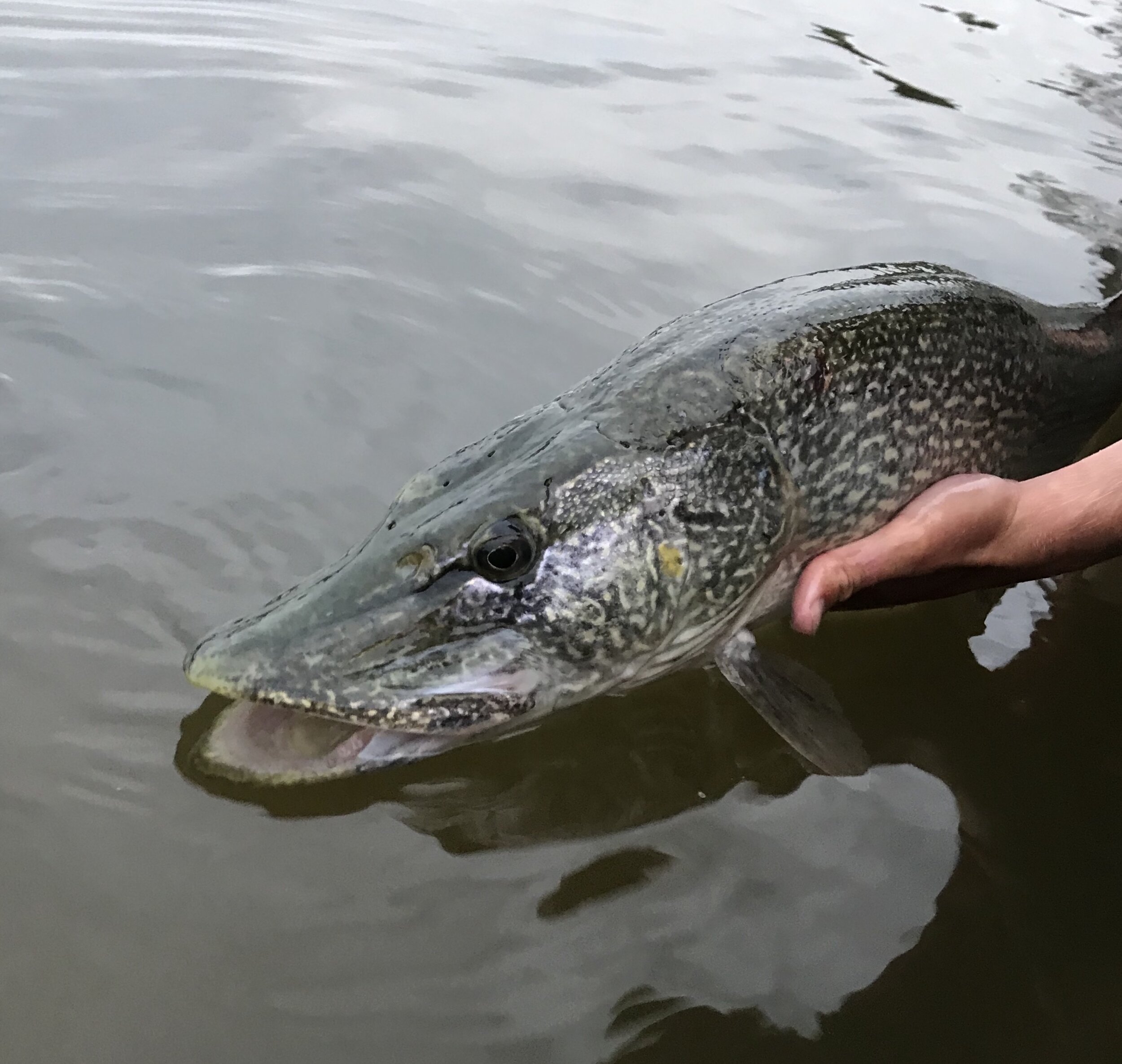The Canadian Origins of the Northern Pike
By Dean Taylor
Pike are common throughout the world, from Scotland to Russia to Scandinavia, and are viewed in many areas as prized gamefish. In Canada, on the other hand, the abundance of Pike in our lakes and their tendency to take resources from other species has given them a near-nuisance reputation among die-hard anglers of other species. While their apparent efficiency and adaptability to our nation’s lakes and rivers may often be chalked up to an endless hunger and unbridled aggression towards other species, their origin story may suggest that their success in this part of the world has much deeper evolutionary roots.
The Evolution of the Esox Family
As with many fish species, the majority of the Northern Pike’s evolution took place around 419 million years ago during the Devonian period, a time when underwater life began to take shape, fittingly nicknamed The Age of Fishes. Most notably for this subject, this was the period when fish first started to develop teeth and when toothy predator species began to dominate the globe. This development of these new toothy species continued for millions of years, however, it wasn’t until roughly 80 million years ago that we started to see a species resembling our modern-day Northern Pike.
This new evolution was largely sparked by the drifting of the North American continent towards the North Pole. As the continent moved north and its waters began to cool, one species of the Herring-Salmon family began adapting to the new environmental conditions, resulting in a species known as Esox Tiemani, the first member of the modern Esox genus. These adaptations included the evolution of long, slender bodies, shovel-like mouths full of sharp teeth, and large jaws capable of eating much larger fish than their salmonoid cousins. These long yet skinny jaws gave these fish the ability of appearing small, sometimes even invisible, when viewed head-on, providing prey with the illusion that the fish is farther away than it actually is.
In Europe, a similar process was occurring, spawning a closely related species of fish known as Paleoesox fritschei. This species, in response to the cooling conditions, evolved into two local subspecies while here in North America, the modern Muskellunge (Esox masquinongy) began to take shape. The modern muskie, as well as its Eurasian cousins, likely existed in a rather stagnant state for a significant period of time until around 2.58 million years ago when the Pleistocene glacial period killed off the Eurasian subspecies and forced the North American species into another major period of evolution, creating the modern-day Northern Pike (Esox Lucius), a species much more tolerant to cold water temperatures.
Canadian Origins and Global Distribution
Since Pike are so widespread throughout the world today, it was often thought that these fish evolved in Eurasia as a subspecies of the formerly mentioned Paleoesox fritschei, which shared its origins in the Esox Genus. This species was thought to have done the majority of its evolving in northern Europe before eventually crossing the Bering Strait into North America through freshwater rivers, such as the Yukon, on the once present land bridge between Alaska and Siberia.
Beringia: The land bridge connecting modern-day Alaska with Siberia. Evidence in the Yukon River suggest that this is the likely sight of the Northern Pike’s journey to Eurasia
While this theory was widely accepted for quite some time, three separate discoveries throughout the 1900s in both Alberta and Saskatchewan dated Pike remains to roughly 80 million years before Paleoesox fritschei had even existed. These discoveries turned the Eurasian origin theory on its head and provided strong evidence that the Esox genus and the Northern Pike evolved in modern-day Alberta, existing here 30 to 50 million years before it first appeared in Europe.
How the species then spread throughout the globe is still somewhat of a mystery. Here in North America, Northern Pike and other members of the Esox genus were spread through the Laurentide Great Lakes during the last glaciation period which sent them into the Mississippi and throughout the modern-day United States. In terms of Eurasia, the Barren Strait is still the most likely route that these fish took, expanding its range from Alberta to Alaska to Siberia and throughout northern Europe. Their journey to Scandinavia and the UK likely occurred through similar land bridges such as the De Greer and the Thulean, though much of the Northern Pike’s modern distribution throughout the UK is a result of man-made efforts.
The De Greer and Thulean land bridges. The Northern Pike’s likely path to Scandinavia and the UK
In conclusion, while the origin of this unique species may not make them any less destructive to stocked bass and trout populations or make them any less annoying when targeting other fish in shared waters, their history in Canada is immensely long and their ability to survive everything our harsh environment can throw at them is at least worthy of some acknowledgement.
References:
Brikiatis, L. (2014). The De Geer, Thulean and Beringia routes: Key concepts for understanding early Cenozoic biogeography. Journal of Biogeography, 41(6), 1036-1054. doi:10.1111/jbi.12310
Diana, J. S., & Raat, A. J. (1989). Synopsis of Biological Data on the Northern Pike Esox lucius Linnaeus, 1758. Copeia, 1989(4), 1099. doi:10.2307/1446014
Morselli, R. (2013, May 09). "Distant Cousins". Retrieved from https://midcurrent.com/science/distant-cousins/#:~:text=About 80 million years ago,eventually becoming the northern pike.&text=Barracuda and northern pike each,evolution: long, skinny jaws.
Skog, A., Vøllestad, L. A., Stenseth, N. C., Kasumyan, A., & Jakobsen, K. S. (2014). Circumpolar phylogeography of the northern pike (Esox lucius) and its relationship to the Amur pike (E. reichertii). Frontiers in Zoology, 11(1). doi:10.1186/s12983-014-0067-8
Smith, S. (n.d.). Pikes and Pickerels. Retrieved from http://academics.smcvt.edu/dfacey/AquaticBiology/Fishes Pages/Pikes.html
Wilson, M. V. (1980). Oldest known Esox (Pisces: Esocidae), part of a new Paleocene teleost fauna from western Canada. Canadian Journal of Earth Sciences, 17(3), 307-312. doi:10.1139/e80-030



